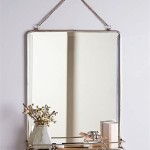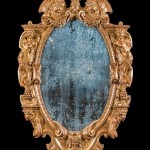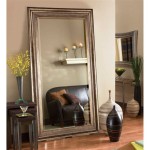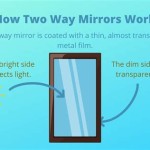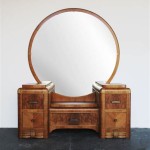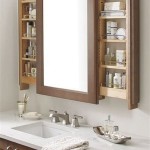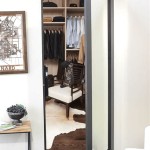Mirror Etching Design: A Comprehensive Guide
Mirror etching, a captivating decorative technique, transforms ordinary mirrors into exquisite works of art. By selectively removing portions of the mirror's reflective backing, intricate designs emerge, adding depth and character to any space. This process involves the careful application of an etching cream, which chemically reacts with the mirror backing, creating a frosted or translucent appearance in contrast with the remaining reflective surface.
Key Design Considerations for Mirror Etching
Creating stunning etched mirror designs requires careful planning and consideration of several key elements:
- Design Complexity: Simple designs are ideal for beginners, while more complex patterns require experience and precision.
- Mirror Size and Shape: The mirror's dimensions and shape significantly influence design choices. Large mirrors offer more space for elaborate designs, while smaller mirrors benefit from simpler motifs.
- Placement and Purpose: The intended location and purpose of the mirror inform the design. Bathroom mirrors might feature delicate floral patterns, while entryway mirrors could showcase bolder geometric designs.
- Overall Style: The etching design should complement the existing decor style, whether it's modern, traditional, or eclectic.
Popular Mirror Etching Design Styles
A wide range of design styles can be achieved through mirror etching, catering to diverse aesthetic preferences:
- Floral Patterns: Delicate floral designs add a touch of elegance and natural beauty, perfect for bathrooms and bedrooms.
- Geometric Designs: Bold geometric patterns, including stripes, chevrons, and abstract shapes, create a contemporary and visually striking effect.
- Art Deco Motifs: Inspired by the glamour of the 1920s, Art Deco designs feature intricate geometric shapes, stylized floral elements, and sunburst patterns.
- Nature-Inspired Designs: Trees, leaves, birds, and other natural elements bring a sense of tranquility and serenity to any space.
- Personalized Designs: Monograms, names, and meaningful quotes add a personal touch to etched mirrors, making them ideal for gifts or personalized home decor.
Materials and Tools Required for Mirror Etching
Successful mirror etching requires the right materials and tools. Gathering these items beforehand ensures a smooth and efficient process:
- Mirror: Choose a high-quality mirror with a smooth, even surface.
- Etching Cream: Select a reputable brand of etching cream specifically designed for glass and mirrors.
- Stencil: Pre-made stencils offer a convenient way to create intricate designs. Alternatively, custom stencils can be created using vinyl or contact paper.
- Applicator: A soft-bristled brush, sponge applicator, or squeegee can be used to apply the etching cream evenly.
- Protective Gear: Gloves, eye protection, and a well-ventilated workspace are essential for safe handling of the etching cream.
- Cleaning Supplies: Glass cleaner, paper towels, and rubbing alcohol are necessary for preparing the mirror surface and removing the etching cream.
Step-by-Step Mirror Etching Process
The mirror etching process involves several key steps that must be followed carefully to achieve optimal results:
- Surface Preparation: Thoroughly clean the mirror surface with glass cleaner and rubbing alcohol to remove any dust, grease, or fingerprints.
- Stencil Application: Carefully apply the stencil to the mirror, ensuring it adheres firmly and smoothly to prevent the etching cream from seeping underneath.
- Etching Cream Application: Apply a thick, even layer of etching cream to the exposed areas of the mirror within the stencil design.
- Etching Time: Allow the etching cream to sit on the mirror for the recommended time specified by the manufacturer. Avoid disturbing the cream during this process.
- Etching Cream Removal: Rinse the etching cream thoroughly with water, ensuring all traces of the cream are removed.
- Stencil Removal: Carefully peel off the stencil to reveal the etched design.
- Final Cleaning: Clean the etched mirror with glass cleaner to remove any residue.
Tips for Successful Mirror Etching
Achieving professional-looking results requires attention to detail and adherence to best practices:
- Practice on Scrap Glass: Before etching a valuable mirror, practice the technique on a piece of scrap glass to gain familiarity with the process and the etching cream.
- Work in a Well-Ventilated Area: Etching cream fumes can be irritating, so ensure adequate ventilation in your workspace.
- Follow Manufacturer's Instructions: Carefully follow the instructions provided by the etching cream manufacturer regarding application time and safety precautions.
- Use High-Quality Materials: Invest in quality etching cream and stencils for optimal results.
- Clean Thoroughly Remove any residue from the etching cream or stencils effectively for a spotless etched design.
Exploring Advanced Etching Techniques
Once comfortable with the basic etching process, exploring more advanced techniques can elevate mirror designs to new levels of artistry:
- Multi-Stage Etching: Applying etching cream multiple times creates varying depths of etching, resulting in more dimensional designs.
- Shading and Gradation: Manipulating the etching time and cream application creates subtle shading and gradation effects.
- Combining Techniques: Integrating other decorative techniques, such as sandblasting or glass painting, with etching can produce truly unique and intricate designs.
Mirror etching offers a versatile and accessible way to transform ordinary mirrors into personalized works of art. By understanding the process, exploring design options, and practicing the technique, individuals can create stunning etched mirror masterpieces that enhance any environment.

Professional Design Collections Séura

Art N Glass Etched Mirror

Etch Grand Mirrors Etched Design

Rectangle Mirror Etched Leaf Pattern Wrg Designs

Frosted Edge Mirror Designs Creative Shower

Frosted Etching Mirrors Etched Mirror Glass Designs Design Wall

Professional Design Collections Séura

How To Etch Your Glass Bathroom Mirror

Decorative Mirrors With Etched Designs Sans Soucie

Listing Sans Soucie Mirror Decor Balcony Glass Design Door

